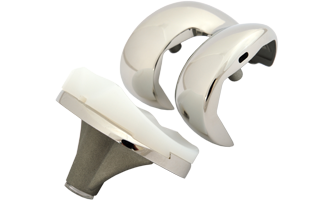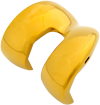
Chromium Nitride Coatings (CrN)
Technology
An arc with high current density is run over the target material causing it to evaporate and to release chromium atoms, which are ionized and propelled towards the implant.
During the process, nitrogen is introduced into the vacuum chamber. The CrN coating is formed when the chromium ions strike the implant surface and, simultaneously, combine with the nitrogen atoms.
An arc with high current density is run over the target material causing it to evaporate and to release chromium atoms, which are ionized and propelled towards the implant.
During the process, nitrogen is introduced into the vacuum chamber. The CrN coating is formed when the chromium ions strike the implant surface and, simultaneously, combine with the nitrogen atoms.

Range of Application
- Orthopaedic implant components
- Surgical instruments
- Rotating instruments
Advantages of the Procedure
- Higher wettability with synovial fluid
- Low friction articulation
- Long-term chemical stability
- Outstanding coating adhesion
Properties
CrN coatings only modify the surface properties. The material properties and biomechanical functionality is not altered by the coating.
CrN coatings only modify the surface properties. The material properties and biomechanical functionality is not altered by the coating.
- Color: metallic silver
- Coating thickness: 0.5–6 µm
- Roughness: Ra ≤ 0.05 µm
- Adhesion strength: at least HF 1
- Coating hardness: ~2,000 HV




